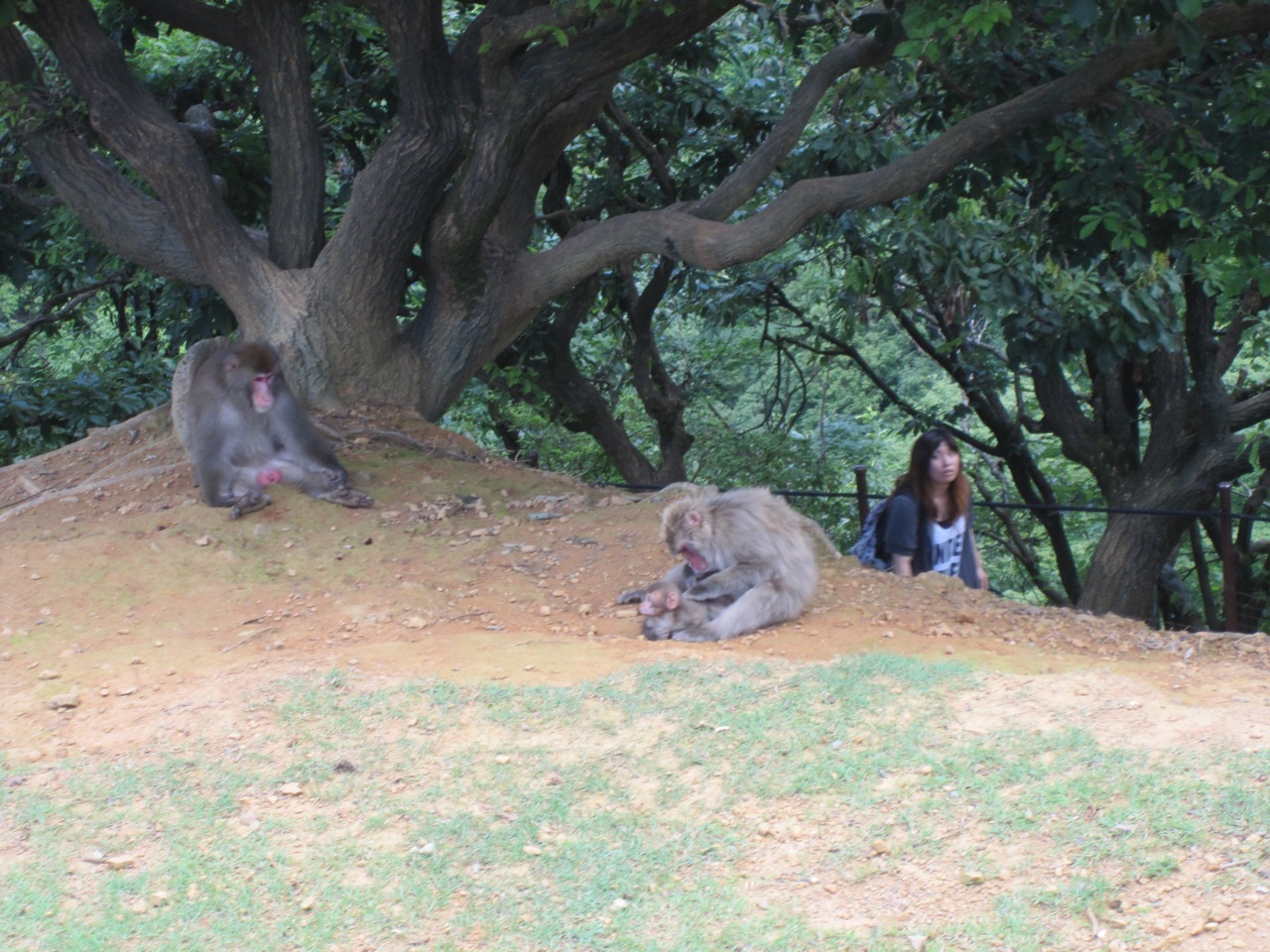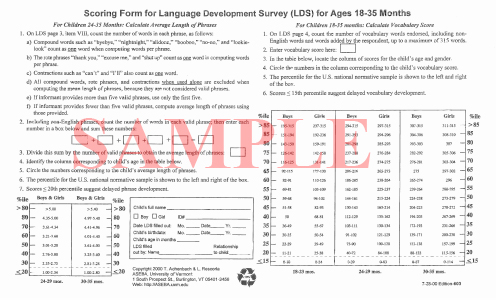Child Behavior Checklist (CBCL), Youth SelfReport (YSR) Thomas M. Silvares 2 Abstract The Achenbach System of Empirically Based Assessment (ASEBA) for schoolage children in the child behavior profile included the establish The Child Behavior Checklist (CBCL) is a common tool for assessing depression in children, as well as other emotional and behavioral problems. The CBCL is used in a variety of settings, such as pediatricians' offices, schools, mental health facilities, private practices, hospitals, and for research. The Child Behavior Checklist (CBCL) was a parentreport questionnaire on which the child was rated on various behavioral and emotional problems. It was first developed by Thomas M. Achenbach and has been one of the most widelyused standardized measures in child psychology for. The Achenbach System of Empirically Based Assessment (ASEBA) for schoolage children includes three instruments for assessing emotional andor behavioral problems: Child Behavior Checklist (CBCL. Aseba instruments for ages 6 to 18 years for ages 6 to 18, the child behavior checklist for ages 618(cbcl618) is completed by parents and. Child Behavior Checklist (CBCL) is a component of the Achenbach System of Empirically Based Assessment (ASEBA). The ASEBA is used to detect behavioural and emotional problems in children and adolescents. The CBCL is completed by parents. The other two components are the Teachers Report Form (TRF) (used with children 6 to 18), is made up. Die Child Behavior Checklist (CBCL618R) dient der Erfassung von emotionalen Aufflligkeiten, somatischen Beschwerden sowie sozialen Kompetenzen von Kindern und Jugendlichen im Schulalter aus Sicht der Eltern. Elternfragebogen ber das Verhalten von Kindern und Jugendlichen (CBCL 418) Quelle: Arbeitsgruppe Deutsche Child Behavior Checklist. Two forms are available for parents that cover the 1. 55 and 618 year age ranges: the Child Behavior Checklist 1. 55; Achenbach Rescorla, 2000) and the Child Behavior Checklist 618 (CBCL 618; Achenbach Rescorla, 2001). A CaregiverTeacher Report Form for 1. 55yearolds, a teacher measure for 618yearolds. Along with this parental response questionnaire, developers have designed a Teacher Report Form (618) and a Youth SelfReport form (1118). These additional measures may be used when a researcher or clinician wishes to understand a childs behavior in. Child Behavior Checklist418 Achenbach, T. 1991 Description of Measure Purpose To obtain caregiver reports of a child's competencies and behavior problems in a standardized format. Conceptual Organization The Child Behavior Checklist416 (CBCL416) was the first of what has become a multiaxial empirically based set of measures for. The Child Behavior Checklist for ages 418 is designed to record children's competencies and problems as reported by their parents or parent surrogates. CBCL23 developed in 1982 Modified to CBCL15LDS in 2000 CTRF developed in 1991 Modified in 1997 CBCL418 developed in 1983 Modified to CBCL618 in 2001 Child Behavior Checklist 418 (CBCL418): para ser completado por ambos padres por separado. Teacher's Report Form (TRF): para ser completado por la maestra. Descripcin del Instrumento Propsito Sirve para obtener informacin de los nios a partir de sus padres o cuidadores. Purpose To obtain caregiver report of children's competencies and behavior problems in a standardized format. Child Behavior Checklist for Ages 618 (CBCL 618) Child Behavior Checklist for Ages 618 is a tool to assess behavioral issues in children ages 6 through 18. A wide range of domains are assessed including school, social, activities, depression, anxiety, somatic complaints, ADHD, defiance, and conduct. The Child Behavior Checklist416 (CBCL416) was the first of what has become a multiaxial empirically based set of measures for assessing children from parent, teacher, and selfreports. In 1983, Achenbach Edelbrock published the Manual for Child Behavior Checklist416, and in 1991 a revised version of the CBCL was published for 4 to 18yearold with no significant changes in the content of items compared to the 1983 version 2. PurposeBackground: The Child behavior checklist (CBCL) is just one component of the Achenbach System of Empirically Based Assessment (ASEBA). This assessment was developed by Thomas M. Achenbach and looks at maladaptive behavior. This assessment is used for a plethora of things and that includes the diagnosis of Attention Deficit Hyperactivity Disorder (ADHD). Manual for Child Behavior Checklist 418, 1991 Profile. Achenbach (Author) Visit Amazon's Thomas M. Find all the books, read about the author, and more. See search results for this author. CHILD BEHAVIOR CHECKLIST (CBCL) Sources. Accuracy of the DSMoriented Attention Problem scale of the Child Behavior Checklist in diagnosing AttentionDeficit Hyperactivity Disorder. The Child Behavior Checklist418 (Achenbach 1991) was completed by parents to determine the presence or absence of emotional and behavioral problems. The primary difference between the CBCL418 (older version) and the CBCL618 (current version; Achenbach and Rescorla 2001) is updated normative data and a change in the lower limit of the age range. Purpose To obtain caregiver reports of a childs competencies and behavior problems in a standardized format. The Child Behavior Checklist416 (CBCL416). Completing the Achenbach Child Behavior Checklist (CBCL) TWO FORMS: The new CBCL has one form for Ages 1 5 and another for Ages 618. 1991 Description of Measure Purpose To obtain caregivers' reports of children's competencies and behavior problems in a standardized format. The 2001 Child Behavior Checklist for Ages 618 (CBCL618) is a standardized measure based on new national norms that were collected February 1999January 2000. The CBCL is to be completed by the parentcaretaker who spends the most time with the child. Brief Problem Monitor for Ages 618 (BPM618) T. Rescorla Research Center for Children, Youth, and Families childs age and gender, the type of informant, and from the Child Behavior Checklist for Ages 6. A 4page checklist parents complete to look for competencies and for emotional and behavioral problems in children The ASEBA approach originated in the 1960s with Dr. Achenbachs efforts to develop a more differentiated picture of child and adolescent psychopathology than was provided by the prevailing diagnostic system. The Child Behavior Checklist (CBCL; Achenbach Edelbrock, 1983) measures a broad range of behavioral and emotional problems and is widely used for clinical and research purposes. Achenbach and Edelbrock (1983) conducted a factor analysis Child Behavior Checklist for Ages 618 (CBCL618; Achenbach and Rescorla 2001) The 120 items on the CBCL are rated as Not True (0), Somewhat or Sometimes True (1), or Very True or Often True (2). Ages 1859: Brief Problem Monitor1859, Adult Behavior Checklist, Adult SelfReport (pp. 1011) 2 The ASEBA is a comprehensive evidencebased assessment system developed through Child Behavior Checklist for Ages 618 French Version is a tool to assess behavioral issues in children ages 6 through 18. A wide range of domains are assessed including school, social, activities, depression, anxiety, somatic complaints, ADHD, defiance, and conduct. 1 Child Behavior Checklist (CBCL) Alias Achenbach Alias ASEBA (Achenbach System of Empirically Based Assessment) JOSE DOUAIRE, Commission Scolaire de la Pointedel le Doctorante en psychologie de l ducation, UQAM Formatrice au Centre de Services Psychologiques de l UQAM. 2 Plan de la formation Prsentation gnrale de l ASEBA Changement entre les versions 1991 et 2001. Child Behavior Checklist for Ages 418. Achenbach, Thomas; Date Issued: 1991: Publisher(s): ASEBA (Achenback System of Empirically Based Assessment) Description: A standardized questionnaire, administered to parents or surrogate parents, designed to gather information on competencies and problem behaviors of children aged 2 to 3 or 4 to 18. The Child Behavior Checklist (CBCL) is a widely used caregiver report form identifying problem behavior in children. [1 [2 It is widely used in both research and clinical practice with youths. It has been translated into more than 90 languages, [3 and normative data are available integrating information from multiple societies. The ASEBA approach originated in the 1960s with Dr. Achenbachs efforts to develop a more differentiated picture of child and adolescent psychopathology than was provided by the prevailing diagnostic system. Child Behavior Checklist 418 (CBCL418): para ser completado por ambos padres por separado. Teacher's Report Form (TRF): para ser completado por la maestra. Descripcin del Instrumento Propsito Sirve para obtener informacin de los nios a partir de sus padres o cuidadores. The Child Behavior Checklist (CBCL) is a device by which parents or other individuals who know the child well rate a child's problem behaviors and competencies. Their combined citations are counted only for the first article. Integrative guide for the 1991 CBCL418, YSR, and TRF profiles. Department of Psychiatry, University of Vermont, 1991. 3165: The Child Behavior Checklist and related forms for assessing behavioralemotional problems and competencies. : Child Behavior Checklist418(CBCL) 111. The TRF 618 is completed by teachers and other school staff who have known the child in school settings for at least 2 months. It obtains teachers' ratings of many of the problems rated on the CBCL 618, plus additional items appropriate for teachers. Child Behavior Checklist 618 (CBCL 618): Parent Form Teachers Report Form 618 (TRF 618): Teacher Form Youth SelfReport 1118 (YSR 1118): Youth Form The CBCL 618 obtains parents' or surrogates reports of children's competencies problems. The schoolage assessment forms are the CBCL618, completed by parents or surrogates; the TRF618, completed by teachers and other school staff; and the YSR1118 completed by youths. Child Behavior Checklist (CBCL418) (ocuk Davran Deerlendirme lei ) Ama Dr. Thomas Achenbach tarafndan tasarlanan 4 ile 18 ya aras ocuk Davran Kontrol Listesi ulusal normlara dayal standart veri toplar. Manual for the child behavior checklist418 and 1991 profile get this from a library! manual for the child behavior checklist418 and 1991 profile. [thomas Psychometric properties of the Norwegian version of Child Behavior Checklist Version ages 23, 418, 15 and 618 (CBCL). CBCL is one of three instruments in the Achenbach System of Empirically Based Assessment (ASEBA). Home SchoolAge (618) Materials Child Behavior Checklist 618 Sort by Price LowHigh Price HighLow Title AZ Title ZA Item Code AZ Item Code ZA Popularity Top Rated What is the Child Behavior Checklist? You may have heard of various assessment instruments for ADHD. However, what is the Child Behavior Checklist? According to the following.











